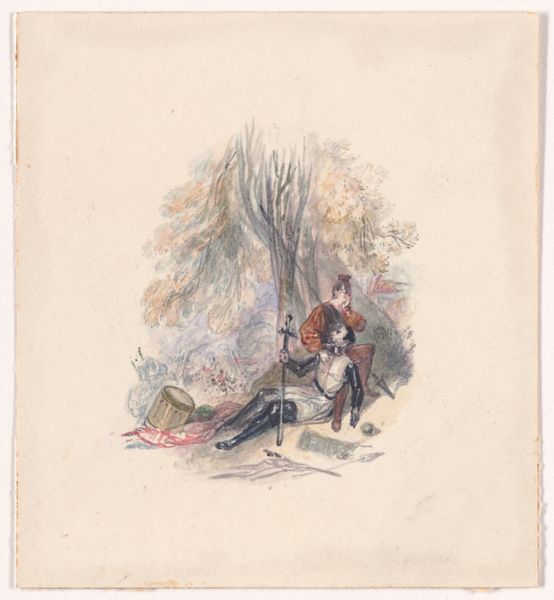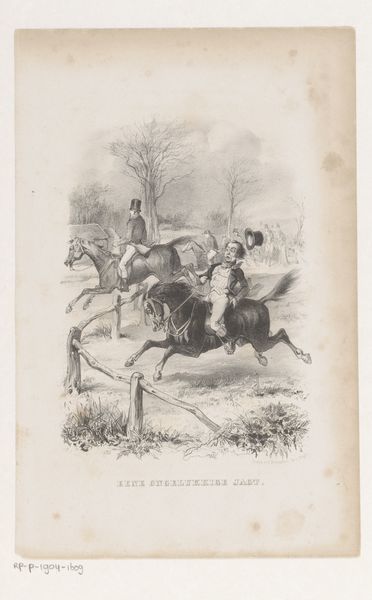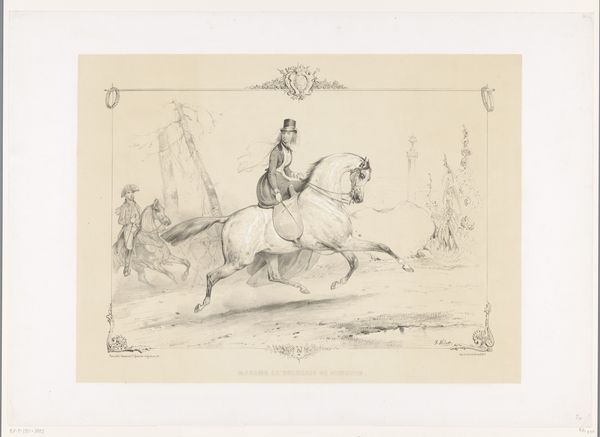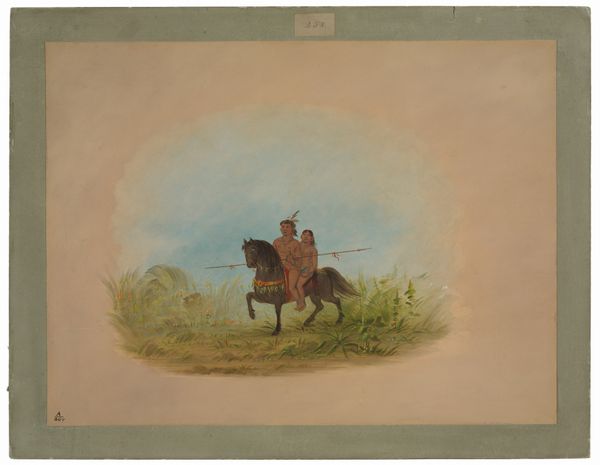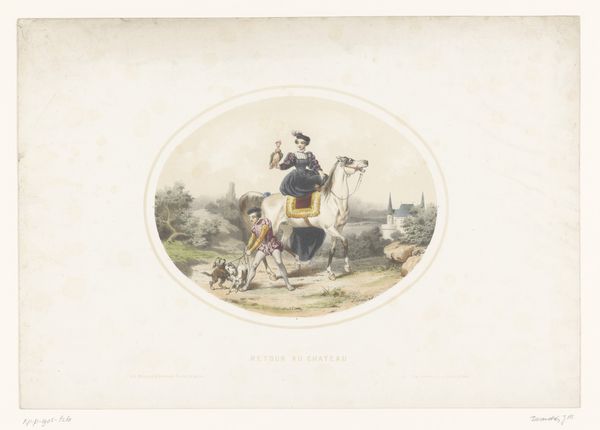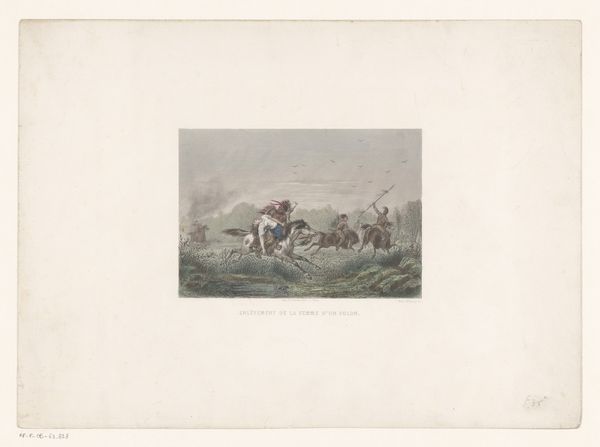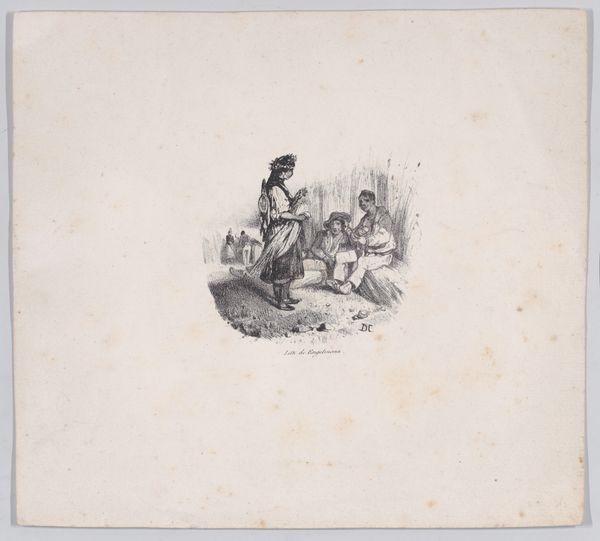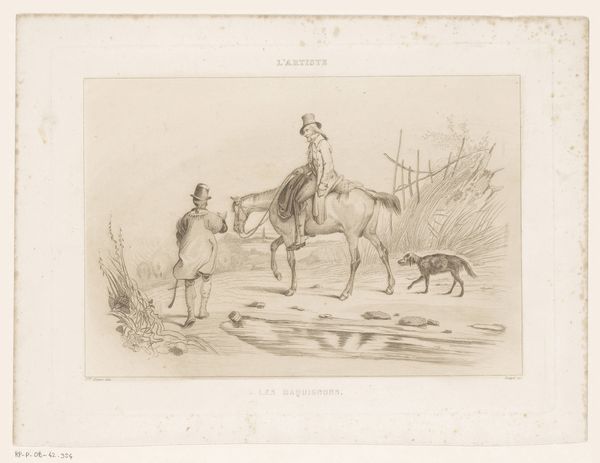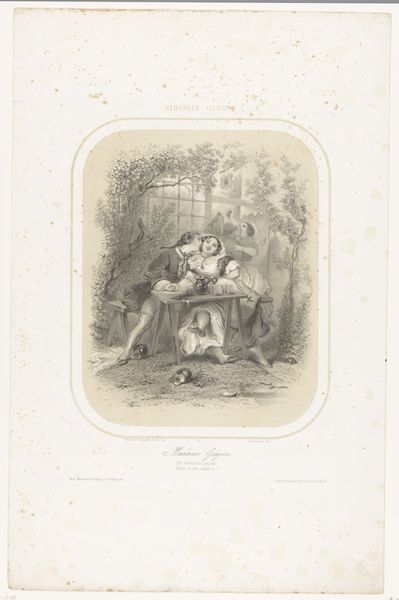
Illustration design for "The Economy of Human Life" 1834
0:00
0:00
drawing, coloured-pencil, print, watercolor
#
drawing
#
coloured-pencil
#
water colours
#
narrative-art
# print
#
landscape
#
figuration
#
watercolor
#
coloured pencil
#
romanticism
#
history-painting
Dimensions: Sheet: 3 15/16 × 3 9/16 in. (10 × 9 cm)
Copyright: Public Domain
Curator: What a delicate scene. Frank Howard created this illustration design, “Illustration design for "The Economy of Human Life"”, in 1834, and it now resides here at The Met. He worked with watercolours, coloured pencil, and likely used a printmaking process as well. Editor: It has a slightly dreamlike quality, doesn’t it? The soft watercolor washes and the composition…the way the figures are placed creates a strong sense of narrative but with very delicate colours. Almost as though filtered through memory. Curator: I agree. The narrative is what truly interests me. Look at the dynamic between the mounted figure and the one struggling on the ground. This artwork really allows us to consider the social power structures that were pervasive at that time. A mounted and armed rider versus a nearly nude figure, with axe. What is being portrayed, really, is class inequity of the period, but also a relationship with labour and access to land or resources. Editor: Precisely, it’s interesting how he's chosen to articulate that class divide. The texture in the horse's mane compared to the rather more muted shading used to delineate the suffering man. The sharp rendering of the bridle suggests restraint and authority, against the desperation of the man reaching upward. Curator: Exactly! And thinking about the title – "The Economy of Human Life" – Howard is possibly drawing our attention to how society assigns value to different lives, based on economic status and their placement within a certain class strata. Who has the right to resources, to agency, to even a basic standard of living? The seated figure in command, high above the impoverished. Editor: It also offers us a glimpse into Romanticism. The rather grandiose landscapes and emphasis on heightened emotional states were clearly crucial aspects to artists like Howard at this moment. The details, while softened by the watercolour medium, are still very descriptive. Curator: And what stories these images carry forward. To consider labour, class, access…what questions these compositions bring forward to us. Editor: Indeed. There's a timeless quality to Howard's romantic piece. One leaves with far more questions than answers about both its technical merit and underlying social themes.
Comments
No comments
Be the first to comment and join the conversation on the ultimate creative platform.
